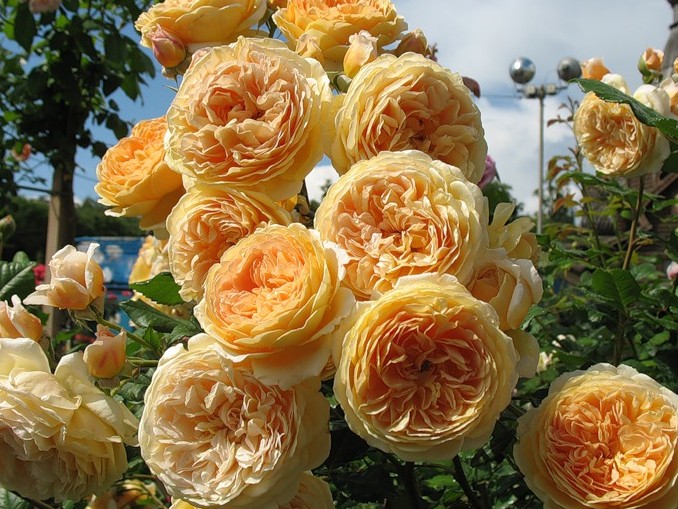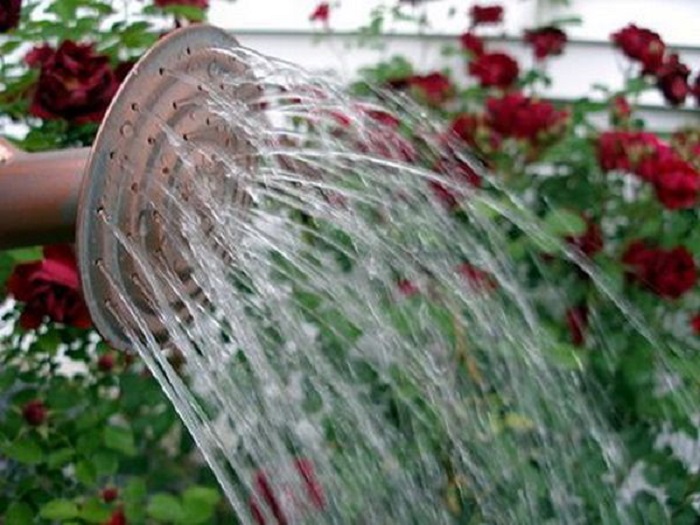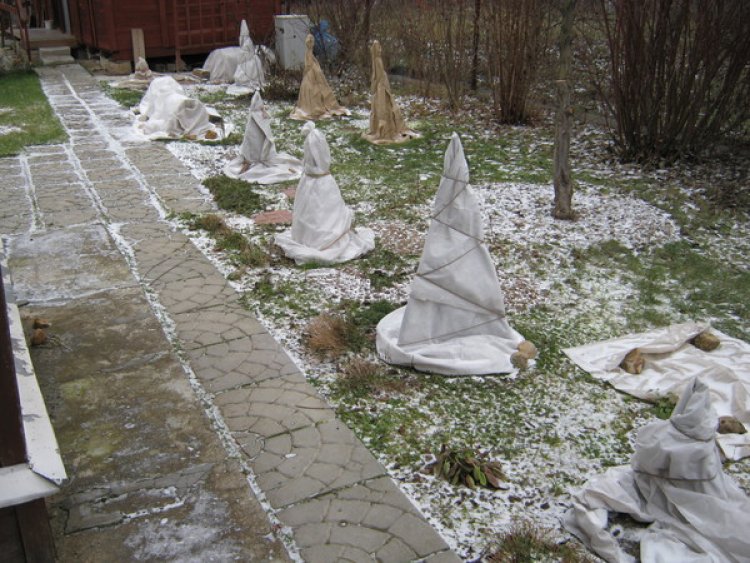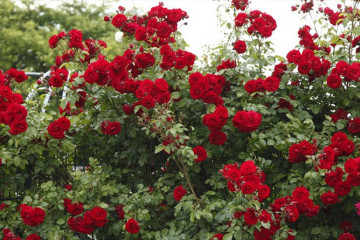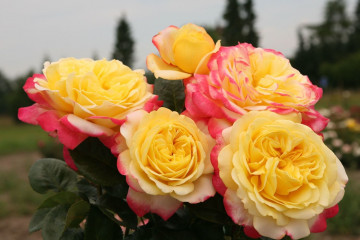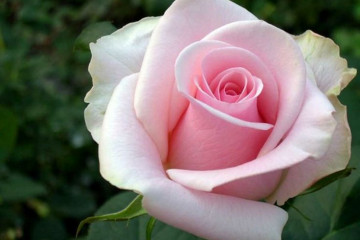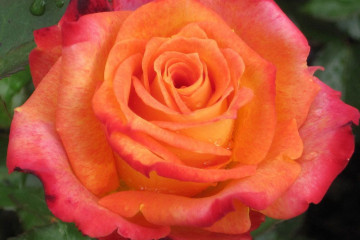Rose Princess Margaret (Crown Princess Margareta)
Content:
Roses are very beautiful flowers. There are various varieties, types and forms of these plants. Among them, the David Austin flower group stands out, which includes the rose Princess Margaret.
What is this variety, the history of creation
Rose Crown Princess Margareta was bred in England in 1999. Bred by her breeder David Austin. He decided to cross the old species with the modern hybrid tea group. The scientist tried to make the main efforts to preserve the external qualities and the formation of more stable qualities in the flower to the influence of negative factors.
The Swedish princess Margarita became the one after whom the flower in question is named. She loved to plant flowers. The name of the rose is translated as Crown Princess Margarita. The shrub belongs to the English leander hybrids. It resembles a crown in shape.
Brief description, characteristic
Crown Princess Margarita Rose has the following characteristics:
- the height of the bush is 2 m, and the width is 1 m;
- stems can bend to the ground;
- thorns are practically absent;
- the leaves are small in size, have a rich green color;
- flowers are of medium size, double, their color is apricot;
- flower diameter - 10-12 cm;
- the aroma has fruity notes.
Advantages and disadvantages
Rose Crown Princess Margaret has the following benefits:
- It is resistant to various diseases.
- Blooms profusely and for a long period of time.
- The flowers are large.
- It is easy to propagate by cuttings.
The Princess Margarita rose also has some disadvantages:
- At first, there are few flowers on it.
- Over time, the stems become rough, which causes problems when sheltering in the winter.
- Sunlight negatively affects the appearance of the rose.
Use in landscape design
The Crown Princess Rose can be grown both separately and in flower arrangements. It looks especially good with violet-blue flowers. For example, with delphinium, sage. The princess rose can often be found as park hedges or to decorate mixborders.
Growing a flower
Rose Crown Princess Margarita is grown in the same way as other varieties.
In what form is the landing
Roses are planted with seedlings.
What time is the boarding
Rose planting is carried out twice per season:
- In spring, when the earth warms up to +10 degrees and there will be no chance of frost.
- In autumn, 30 days before the onset of cold weather.
Location selection
The place should be in partial shade. Direct sunlight will cause the buds to turn pale. The flower needs light for 4-5 hours.
How to prepare the soil and flower
The soil should be moderately moist, loamy and fertilized. The pH level is 5.6-6.5. The soil is dug up, fed and all the weed is removed. The seedlings are kept in a growth stimulator for 3 hours.
Landing procedure
Landing includes the following steps:
- Make a hole 60 cm deep.
- With a thickness of 10 cm, drainage from sand and expanded clay is placed on the bottom of the pit.
- Put the nutrient composition (peat, manure, humus soil).
- All roots are carefully straightened. The bush itself must be kept upright. The inoculation site should be underground at a depth of 3 cm.
- The soil is filled up, compacted, watered and mulched.
After planting, the soil needs to be well moistened so that it settles to the roots. The distance between plants must be at least 1 meter.
Care
Caring for this type of rose is the same as for other types.
Watering and humidity
Water as the soil dries. Watering is required with warm and settled water. Watering is best done in the evening. It is forbidden to let water fall on the leaves. In extreme heat, the bush is sprayed with warm water.
Top dressing
It is necessary to feed the plant every three weeks. Fertilizers containing nitrogen are applied at the beginning of the growing season. In autumn and during flowering, potash and phosphorus fertilizers are applied.
Pruning and replanting
Sanitary pruning is carried out at the beginning and at the end of the season. It is necessary to remove injured branches. Shoots are shortened every spring by 1/5 part. A plant that is more than six years old is not recommended to be transplanted anywhere, as its roots go deep into the ground and transplanting can greatly harm the flower.
Wintering
Shelter is made for the winter. Fences are removed from the supports and folded. Sawdust and spruce branches are poured on top. The flower is able to endure frosts down to -35 degrees.
Bloom
The species in question blooms for a long period. In season, flowering occurs in 4 doses. During flowering periods, potash and phosphorus fertilizers are applied. Possible reasons why the rose does not please with flowering are improper care and flower diseases.
Reproduction
The rose reproduces:
- By cuttings - choose stems that go into a state of woodiness. Places that are cut are treated with a growth agent. Storage of cut shoots is carried out in a warm place at a temperature of +20, +22 degrees.
- By dividing the bush - produced in autumn or spring before the buds bloom. The bush is divided into several parts. Before this, the branches are removed so that they do not interfere and do not take away nutrients.
Diseases and pests
Rose Princess Margarita is resistant to diseases and pests. She can get sick with typical diseases: infectious burns, various spots, powdery mildew. Of the pests, aphids, scale insects and leaf beetles stand out.
Rose Princess Margarita has a beautiful appearance and is resistant to disease. She does not require special care.
